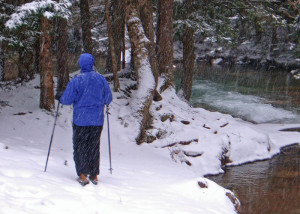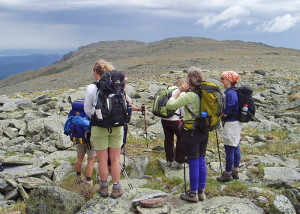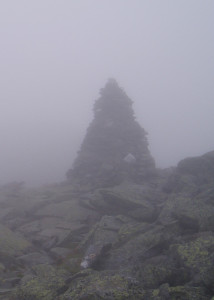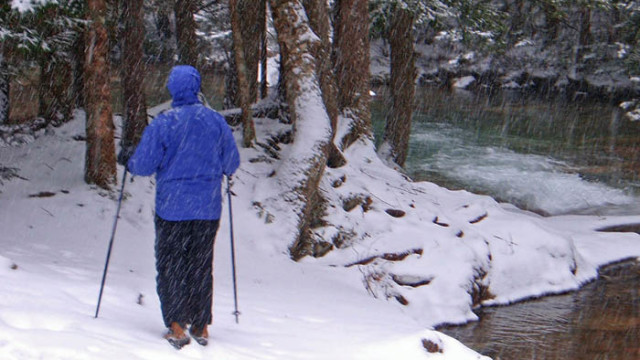
As I write this, it’s 32.4 degrees outside my office window, the wind is blowing, and it’s raining. A downpour, actually. A few minutes ago it was heavy, wet snow, not rain.
And, yes, I’d rather be out there playing than in here working on the computer.
In this case, it happens to be April, a month that can be winter, summer or something in between, April, like November, is noted for damp, cold, wind, and generally unpredictable weather, especially in the mountains of New England. I’ve seen equally uncomfortable (OK, nasty) weather every month of the year, but it’s most common in late March and April, then again late October through late December: the “shoulder” seasons.
With the cold temperature, rain and wind, these are absolutely perfect conditions for developing hypothermia. The dictionary defines hypothermia as: “an abnormal lowering of the body temperature.” Sounds pretty benign, doesn’t it? Not at all like something that can kill you in a hurry if you aren’t prepared. But you’ve heard of people dying of “exposure,” right? Yup, that’s hypothermia . . .

Human beings must keep their internal body temperature close to 98.6 degrees Fahrenheit. A whole host of systems function together to maintain that critical core temperature. A few degrees either side and you are in trouble. If your core temperature drops below 90, you are dying; at 85, you’re dead.
How To Avoid Hypothermia
In winter, almost everyone who heads outdoors is prepared for cold. Cold is expected. But you are most likely to encounter hypothermia when temperatures are relatively moderate. Given the right circumstances, you could die of hypothermia when the temperature is in the 60s.
In fact, a typical hypothermia scenario might start when the sun is shining brightly and the temperature is near 70. Perfect day for a quick hike to the top of a nearby hill. You won’t be gone long, the sun is shining and the temperatures are mild, so you are wearing just a t-shirt and shorts. You even sweat a little.

Because you are moving, enjoying yourself, you don’t notice that the temperature is dropping and clouds are rolling in quickly. By the time you reach the summit, the temperature is in the low 50s, the clouds are thick, the wind has picked up, and it’s raining. Moisture from any source—sweat, precipitation, a dunking—speeds heat loss up to 30 times. For human beings, wet = cold. Wind makes it worse.
Soon you are shivering and it gets harder to think clearly. This is how hypothermia can kill you even in relatively mild weather. Get cold and you get careless: it’s easy to miss a step and break something, which, at best, slows down your retreat to safety and warmth. Or, you get lost and you panic, burning precious energy reserves ineffectually.
Once rational thinking stops, you are in real danger. In late-stage hypothermia, it’s even common for victims to remove their clothes and discard them—which hastens the end.
Fortunately such a scenario is pretty easy to prevent. The first line of defense is always common sense. Wear adequate clothes, starting with the right baselayers, add insulation layers and a good outer shell as necessary, and keep your head, hands and feet warm . Carry food to fuel your inner furnace, and plenty of water. Avoid alcohol, which makes you feel warm while you lose heat faster.

Carry a basic emergency kit which includes fire-starting supplies and at least one 55 gallon contractor’s trash bag for an emergency shelter. Avoid excessive sweating which cools your body. If it starts to rain or snow, cover up and move carefully.
Hypothermia is always lurking out there to weed out the foolhardy. Being aware and prepared is your best line of defense. Don’t let fear of hypothermia keep you house bound, even when it’s 34.2 degrees and raining. But don’t ignore the danger, either.
How To Avoid Hypothermia: Signs Of Hypothermia
Hypothermia is often difficult to recognize, especially in yourself. By the time your body temperature has fallen to where you are showing obvious symptoms, your cognitive faculties are diminished and you may not even be aware of the danger. Or you may deny it.
The earliest sign of hypothermia is shivering. A little shivering is just your body working to keep itself warm, but shivering that you can’t easily control is a clear danger sign. If you start shivering at all, take the time to eat something, put on more clothes and find shelter from the wind and water. That will short circuit the danger.
Traveling in a group is safer. If you or any of your companions start to feel numbness in your hands or feet, suddenly feel extreme fatigue, if you or they show a lack of coordination, slurred speech, blue or puffy skin, and most especially, impaired thinking or irrationality, you’ve got real trouble brewing. It’s time to get that person fed, watered, encased in warm layers and, if at all possible, out of the elements.
How To Avoid Hypothermia: Wear Your Basic Shelter
With the right clothing, hypothermia is almost never an issue during the shoulder seasons—unless you get caught out for an extended period by getting hurt or lost.

At first thought, it seems a bit odd that beings who are composed of, roughly, 55-60% water would be so concerned with keeping themselves dry. But in cold weather, we don’t just want to stay dry, we need to for our own safety.
Invest in a good waterproof, breathable jacket and pants. Be really picky about details. For example, you want as few seams as possible in the shoulder area and all seams should be tape sealed or welded. The newer water resistant zippers are another nice touch. A good hood is essential, and the cut should be roomy enough to wear layers of non-cotton insulation beneath.
If you start out on a nice day and the weather suddenly turns (as it can in an instant), good raingear is going to help you stay dry and warm. And staying dry and warm is going to help you get home safely.


